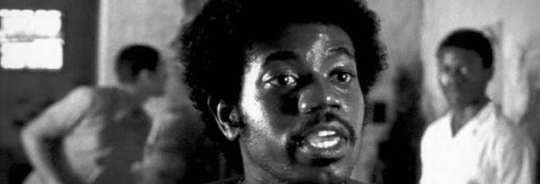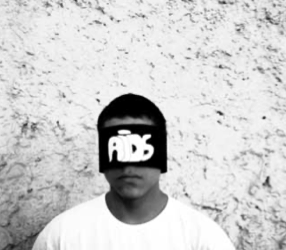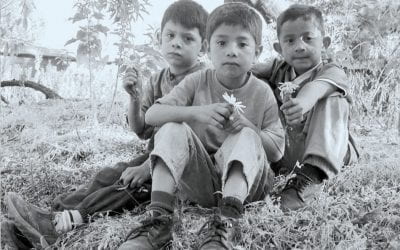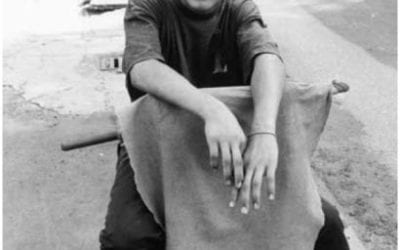Nós do Cinema
The Role of Cinematography in Social Change

A scene from City of God
Half a dozen adolescents with indigenous features and urban garments entered the Rio movie theatre, peering curiously all around at the movie posters and filmgoers. This would be the first time that these Brazilian youth would watch a movie in a theater. They came from near and far—from as close as a tribe in the state of Rio and as far away as the Amazonian rainforest. Following behind the teenagers were others, both adults and teens, who seemed hesitant to disrupt this experience. A young man with a camcorder brought up the rear. I walked over and introduced myself to the gathering, which included Alexandre Rodrigues, an actor who portrayed Buscapé in the movie City of God.
This was the beginning of the most interesting movie theater experience in my life to date.
It was not a chance meeting. As a Harvard Graduate School of Education doctoral student on a DRCLAS internship grant in Brazil, I’d arranged to meet Nós do Cinema (We in Cinema) members here. The group was hosting indigenous youth to watch the documentary Paulinho da Viola—Meu Tempo é Hoje (My Time is Today).
For many Brazilians, contemporary composer and singer Paulinho da Viola is a national cultural icon. For these youth, the outing served as an introduction to both the movies and the singer. For me, it was also an introduction. I had only heard of Nós do Cinema, an organization comprised of youth who, just a few years ago, were more likely to be pegged as social problems than as agents of social change.
Based in Rio de Janeiro, Nós do Cinema originally aimed to train cast members for the City of God, which offers a portrayal of the rival drug factions in the city. I had met Katia Lund, the movie’s co-director, at a DRCLAS presentation last spring. She was trying to obtain donations for Nós do Cinema to continue training youth from various favelas in Rio in all aspects of filmmaking.
I was especially intrigued by the Nós do Cinema’s fundraising talks at private schools in Rio de Janeiro and São Paulo. As a result of interest generated in City of God, youth from the project went to these schools to debate issues of class and race, both central themes in the movie. This unprecedented forum provided equal space for adolescents from some of the poorest communities in Rio and adolescents from elite society to voice their opinions and to meet each other as people, not as stereotypes. Eventually, Nós do Cinema intends to expand these talks to more schools in the city, including those that cannot afford monetary contributions to the organization.
Luis Nascimento, a leading young member of the organization, provided me with opportunities like the theatre outing to help me understand the group’s mission better. He told me that he wanted to establish links through the Internet and possible exchanges with students in the United States who are interested in visual media. Nascimento sees the field of cinematography “as an instrument for education and a fan that opens into various careers” rather than an end unto itself for these youth.
My final experience with Nós do Cinema consisted of meeting a young man known as “BR” who represented the organization at the 2003 International Festival of Short Films in São Paulo. Included in the movies screened was Sapukay, a documentary film that Nós do Cinema wrote, filmed and produced. The film documents an indigenous tribe located close to Angra dos Reis in the state of Rio de Janeiro, a city known both for its tourism and for being home to the only nuclear power plant in Brazil. It follows the process of a satellite dish installation on the tribe’s land, put in so that members can access the Internet and cut out the middleman when selling their crafts to the public. Internet access is also meant to connect different tribes as a means of preserving their indigenous heritage.
There is a long way to go before Nós do Cinema becomes a wellestablished institution and before the youth’s work is respected beyond its connection to City of God. After watching the films and participating in the workshops, “BR” touched upon the ideological divide he sees between cinematographers who start grassroots projects and the participants, saying cinematographers “don’t need to try and show reality, they have to try to change reality.” In being exposed to these young men and women’s professionalism, passion, and love of cinematography, I left the festival and my internship experience with Nós do Cinema filled with hope for the future of the organization and its charismatic youth.
Winter 2004, Volume III, Number 2
Leticia Braga is a second-year doctoral student in Human Development and Psychology at Harvard Graduate School of Education. She is studying Brazilian immigration to the United States, and the role community organizations play in youth’s adaptation and identity formation. She can be contacted at bragale@gse.harvard.edu.
Related Articles
Where the Patient Still Thinks…
Like a row of dolls, they sit in the clinic waiting room—a dozen or so 14- and 15-year-old girls—all dressed nearly identically in navy blue school uniforms. With the television blaring real-life…
Through the Eyes of Children
Twenty years ago, I put my camera away, suspending a photographic career I’d happily pursued for nearly a decade. I did this after publishing photos I’d taken in a Salvadoran war zone in 1983…
Teen Life
Teen Life In Latin America and the CaribbeanWhat is life like for teens in Latin America and the Caribbean? That's a question I set out to answer when I was approached by Greenwood Press to co-edit Teen Life in Latin America and the Caribbean, with Kristen Sternberg...




